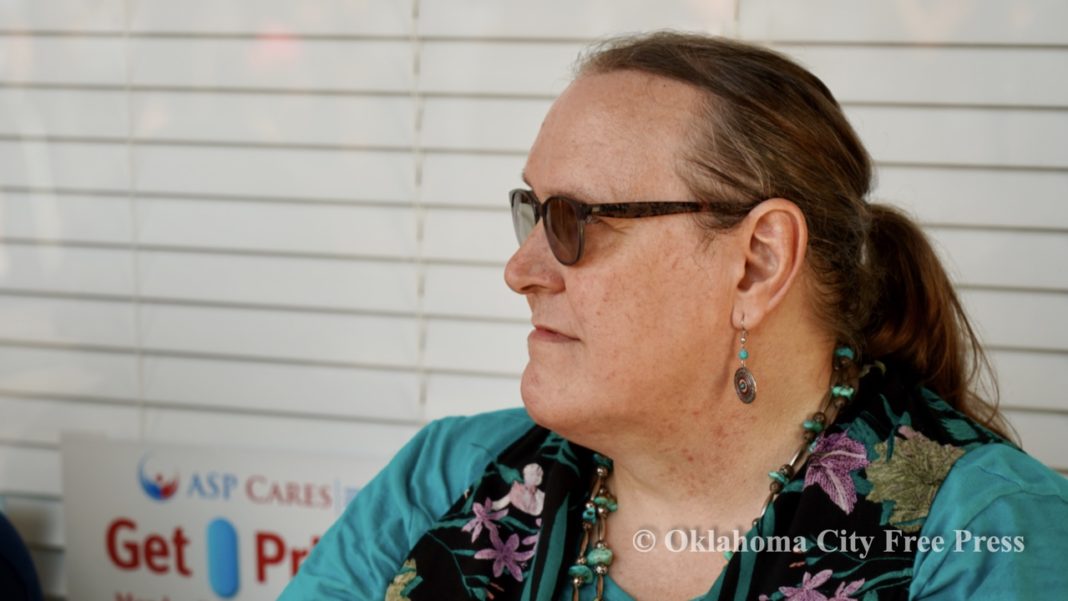Last Updated on January 5, 2024, 12:57 AM | Published: May 28, 2021
Paula Sophia Schonauer, LCSW, continues a serial memoir. If you haven’t read the earlier parts of this series, look at the bottom of this page.
“We are, all of us, haunted and haunting.”
― Chuck Palahniuk, Lullaby
Dad announced we were moving out of my grandparents’ house, that he had a home for us, and we were going to be together as a family.
The home he acquired had belonged to my Great Aunt Mabel before she died by accidental self-immolation, so I was told. When I asked what that meant, Mom said, “She burnt herself up.” No further explanation.
Aunt Mabel was my grandmother’s sister on Dad’s side of the family. I remember her as elegant but sad with a bouffant hairstyle and dangling earrings. Other than that, I did not know her, not really. I was a kid, and she was an adult doing adult things at family get-togethers.
She was the grandmother of my cousin, Rob, who was my age, and the mother of my cousin Nancy, who lived with my family while attending high school before we lost our house to bankruptcy.
She stayed in our extra bedroom and introduced me to the Beatles via their Rubber Soul album, and we watched A Hard Day’s Night together one Saturday afternoon. We were eating supper when we got a phone call about Aunt Mabel’s death. Nancy cried and screamed. I did not see her for a long time after that.
The house on 8th street still had evidence of a fire: a huge hole near an upstairs window where the firefighters broke through to air out the house, black marks in the shape of tongues where the flames licked through cracks in the siding, a hole the size of a couch in the living room directly in front of the fireplace, bricks singed with soot and baked in by the heat.
Wallpaper in the dining room had caught fire, the walls black with peels of paper drooping down, delicate and turning to cinders when the wind blew. Everything downstairs had been covered with soot, most of the furniture charred, and a statue of a horse mounted on a pedestal, half-melted in the middle, leaving a concave crease on the horse’s left side. The odor of smoke permeated everything.
Dad had to remove most of the living room floor, and he built a bridge from the stable part of the dining room all the way to the staircase. Walking that bridge, especially at night, was unsettling, the basement, musty and dark, alive with shadows. I imagined tendrils of shadow slithering up from the murk to grab my ankles and pull me down into oblivion.
We lived in the kitchen most of the time, eating meals and watching TV, and we slept in one of the bedrooms upstairs, all together again, like at Grandma’s house. The bathroom was down the hall from the bedroom, walls stained with soot, bathtub faucets broken. Dad had attached vice-grips to the nozzles so we could turn them off and on. The carpet that had covered the hallway floor had been removed, carpet staples still embedded in the wood. I cut my feet numerous times in the middle of the night when I got up to go to the bathroom.
The worst part of living in that house was knowing my aunt had died horribly only months before. I was sure the house had to be haunted, though Dad consistently assured me there were no such things as ghosts. Mom, however, was not as certain.
I did see some weird things, especially at night: shadows outside the door, patches of darkness deeper than the normal dark of night. They seemed to absorb the ambient light filtering in from outside: streetlights, car lights passing by on the street, and the glow of a single, feeble nightlight mom had placed in the bathroom.
These gloomy forms were humanoid in shape, grotesque, monstrous, and mournful. Sometimes, I heard footsteps in the attic above our room, distinct and loud compared to the sounds of my slumbering siblings, Mom’s chattering teeth, and the occasional grunts and groans Dad made if he decided to sleep at night.
I shuddered beneath the covers, crying softly to myself, praying to God to spare me from nightmares. Sometimes, during the day, I saw things just outside my periphery, movement, flashes of light, shadows.
Nowadays, I do not think the house was haunted so much as I, myself, felt haunted, my dread and depression manifesting in scary but comprehensible ways, externalized by the folklore of ghosts and spirits.
Children suffering from trauma and depression sometimes experience the manifestation of psychotic symptoms, and the most common psychotic features associated with depression often involve seeing shadows or hearing ambient noises and/or whispers other people do not see or hear.
Though I shared my experiences with my parents, they attributed them to an overactive imagination. Perhaps they were right, but one fact remained: I felt uneasy in that house the whole eight years we lived there. It was a web of darkness created by tragedy, aided by trauma, and sustained by pathos.
Truth be known, every member of my family contributed to the quagmire of dread coagulated in that house, notably, my brother’s night terrors, screaming in the dark, not quite awake but not quite asleep, horrified, and desperate, fear beyond comprehension.
His frequent screams over the course of two years unsettled us all, adding to an already ominous atmosphere.
When he was old enough to articulate what he experienced, he shared a vision of tiny people standing on the molding of doors and windows. He described them having “big eyes” while gesturing with fingers shaped in circles many times the size of his own eyes.
The words were not so scary but the look on his face was unnerving – so much dismay. “And they watch me,” he whispered, glancing around, wincing like he expected them to appear at any moment.
He summarized our plight, I think – that awful apprehension that something was watching us, a diabolical presence none of us could name.
- Manhood, from the inside out — Memoir and Mythology
- Part 2 — Cubby Hole
- Part 3 — Magic Carpet Cocoons
- Part 4 — Snips and Snails and Puppy-Dogs’ Tails
- Part 5 — Mirror
- Part 6 – Deep Water
- Part 7 – Limbo
- Part 8 – Dissociation
- Part 9 – Shame
- Part 10 – Judgement Day
- Part 11 – Inferno
Guest Columnist Paula Sophia is a licensed clinical social worker in Oklahoma City and a former Oklahoma City Police Officer.








